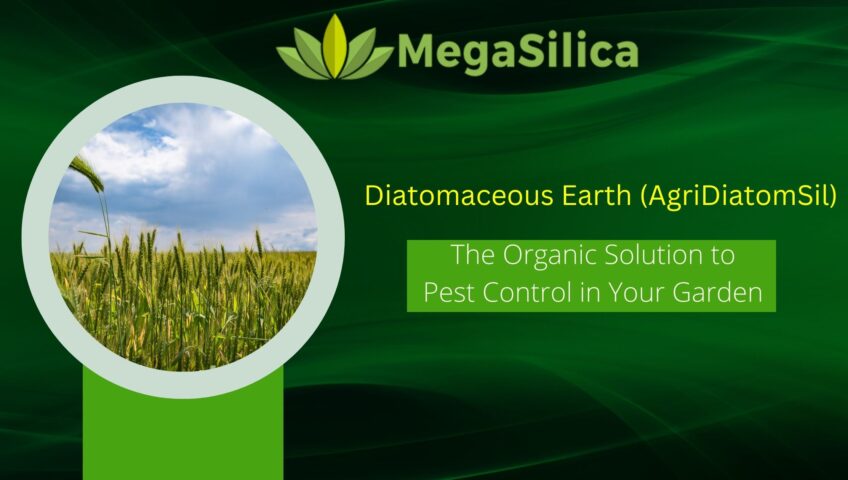Diatomaceous Earth for Plants – Plant growers are constantly looking for natural and effective remedies to repel pests and boost the growth of their plants. If pests are wreaking havoc in your garden, don’t worry! Say goodbye to pests and hello to a blossoming paradise! This blog post will discuss a popular gem for plants that work as a powerhouse. Diatomaceous Earth for Plants is a gem gaining favor among greenthumbs.
So, What Exactly is Diatomaceous Earth for Plants?
DE, or Diatomaceous Earth for Plants, is a naturally occurring sedimentary rock utilized for ages for various purposes. Diatomaceous earth not only protects your plants from pests but also feeds them.
How Does Diatomaceous Earth(AgriDiatomSil) Work?
The unique structure of diatomaceous earth makes it extremely effective against pests. The microscopic particles, with their sharp edges, can puncture the exoskeletons of insects and other pests, dehydrating and finally killing them. This natural matter is safe for humans and pets because no dangerous chemicals are used.
It comprises the fossilized remains of diatoms, which are small aquatic creatures. Their hard silica shells are deposited on the ocean floor when these diatoms die. These shells aggregate over time and produce diatomite strata of sedimentary rock.
Diatomaceous Earth is free from synthetic components, and a valuable tool for controlling pests. This indicates that it offers little risk to people or animals when used as intended.
Benefits of Using Diatomaceous Earth for Plants
- Natural Pest Control: DE works efficiently without harming beneficial insects or polluting the environment with chemicals. The sharp edges and abrasive texture of its particles penetrate insect exoskeletons, dehydrating and killing them within 24–48 hours. DE is effective against ants, aphids, mites, slugs, snails, beetles, and cockroaches. Making rodents uncomfortable to crawl and deterring larger pests.
- Safe for Humans and Pets: Unlike chemical pesticides, it is safe for humans and pets.
- Increased Water Retention: Diatomaceous earth’s (MegaSilica) porous structure absorbs and retains water easily. It helps plant roots have a balanced moisture environment in the soil. This helps prevent overwatering and root rot, which limits plant growth.
- Improved Soil Aeration: Diatomaceous earth’s (MegaSilica) tiny particles enhance soil aeration. The soil-plant root exchange of gases and nutrients depends on this. Improved aeration gives plants oxygen, boosting growth and nutrient uptake.
Right Method to Use Diatomaceous Earth for Plants
Incorporate Diatomaceous Earth (DE) into the garden soil. 1-2 cups of DE should be added to every square foot of the garden area. Now, follow the steps –
Step 1. Find pests: Walk around your garden and look for chewed leaves or stem holes. Focus on applying diatomaceous earth to these locations.
Step 2. Protect yourself: Wear gloves, safety glasses, and a mask when handling Diatomaceous Earth.
Step 3. Sprinkle a thin layer: Use a dust applicator or gloves to sprinkle diatomaceous earth over the damaged areas. Create a barrier against crawling insects by dusting diatomaceous earth around the base of the plants. After rain or watering, reapply.
Conclusion
Diatomaceous Earth is more than simply a pest control agent; it’s a flexible asset for gardeners. Gardeners may unleash the full potential of their plants by utilizing their nutrient-rich composition, water retention capabilities, and natural pest control features. Consider incorporating diatomaceous earth into your plant care regimen, whether you’re growing a lush garden or caring for houseplants – your green friends will thank you.
Diatomaceous Earth (DE) is environmentally friendly, safe for you and your pets, and replaces chemical pesticides.
MegaSilica.com is the only place you need to go to find the best Diatomaceous Earth for Plant’s health and well-being. As a reputable source that sells gardening and plant care supplies, MegaSilica.com stands out as a safe way to get this natural beauty.

